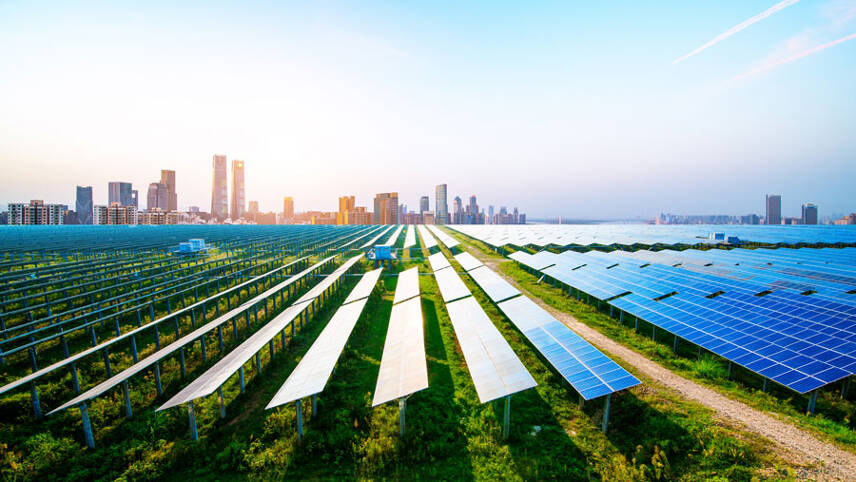Register for free and continue reading
Join our growing army of changemakers and get unlimited access to our premium content

That is the conclusion of a new analysis from the Energy Transitions Commission (ETC), published to debunk myths relating to the impact of a clean energy system on nature, land availability and water consumption.
Published today, the analysis states that around 0.4 million square kilometres of habitable land is currently used for fossil fuel extraction and power generation. This could increase to 1.1 million square kilometres with a rapid onshore wind and solar build-out, but, still, this is equivalent to around 1% of the global total.
In comparison, 51 million square kilometres of land that could be inhabited are devoted to agriculture. Climate scientists confirmed in 2019 that agriculture and forestry are the world’s leading causes of deforestation and habitat degradation. The system is still inefficient, too, with more than one-third of food going to waste, but world hunger rates increasing.
The ETC also assessed how the clean energy transition would impact water use. Those against the transition often point to the water needed to mine critical raw materials, and the impact of hydroelectricity on water systems.
The report finds that the total requirement for a clean energy system would account for around 2% of total annual water consumption by humanity – the same percentage currently required for fossil fuel extraction and power generation. Calculations in the report account for the clean energy value chain, from mining to energy generation, distribution and storage.
For context, agriculture currently accounts for around 70% of total annual water consumption.
Scaling mining
There is an acknowledgement that the transition will exponentially increase demand for critical raw materials like cobalt. But, of the materials required through to 2050 for the energy transition, 95% of the weight is accounted for by steel, aluminium and copper.
These materials can be recycled today. Technology progress will enable more efficient recycling and could boost recycling rates up to 60% for these materials, minimizing the need for raw materials.
“Recycling will play a critical role from 2040 and beyond as the stock of clean energy technologies deployed begins to reach end-of-life,” the report states.
“There are enough resources and minerals in the world for the energy transition,” said the ETC’s chair, Adair Turner.
“But in some key minerals – particularly lithium and copper – it will be challenging to scale up supply fast enough over the next decade to keep pace with rapidly rising demand. Governments, regulators, producers and consumers must work together to increase recycling, improve material efficiency, invest in new mining, and regulate environmental and social standards.”
Even with recycling, new large copper mines must be set in motion sooner rather than later, the ETC concludes.
Carbon conundrum
While a clean energy system will be lower-carbon in operation than a fossil-based one, the report assesses the level of emissions likely to result from the manufacturing and installation of infrastructure key to the transition.
It places the total lifecycle emissions from producing and distributing the required materials and parts at up to 35 gigatonnes of CO2e through to 2053. The current fossil-based energy system produces 41 gigatonnes of CO2e each year from these scopes.
Earlier this week, the International Energy Agency (IEA) revealed that the global share of renewable generation in the electricity supply is forecasted to exceed one-third as demand increases in 2024.


I did not think, when I joined the Atomic Energy Authority, some sixty eight years ago, that by now, so little of our electricity would still be generated by nuclear power.
Renewable energy is fine, but its’ source is dilute, and variable, out our control. I can only suppose that economics plays a dominating hand!